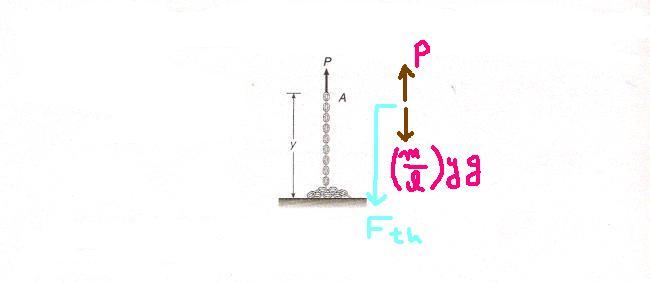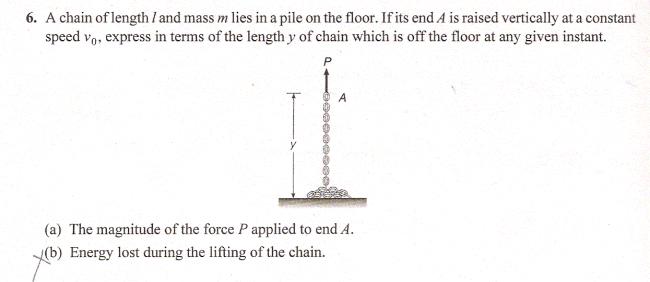 66
66In time δt and additional length v0δt starts moving with speed v0. So the gain in momentum/time = mLv02 which must be provided by the net force P - (m/L)gy. So
P = mL(v02+gy)
Next, the work done by this force as the entire chain is lifted off is
W=\int_0^LP\ \mathrm dy = \int_0^y \dfrac{m}{L}(v_0^2+gy)\ \mathrm dy=mv_0^2+\dfrac{1}{2}mgL
(P.S: The upper limit in the second integration is L and not y)
On the other hand the increase in the mechanical energy of the chain is
\Delta E = \dfrac{1}{2}mv_0^2+\dfrac{1}{2}mgL
So the energy lost is = \dfrac{1}{2}mv_0^2
 11
11
Draw the F.B.D of the hangign part of the chain.
The three forces acting on the hanging chain are; externally applief force P, weight of the hanging portion, and thrust due to the adding of links frm the bottom end.
From variable mass concept, Fth = (dm / dt) x Vrel
Here V rel = 0 - v = -v and the mass of the main system is increasing.
So, Fth is acting opposite to V.
dm / dt = (m/l) dy/dt =(m/l) gV
Therefore, Fth = (m/l)gV 2
As chain is moving with const velocity, therefore
P = Fth + (m/l) y g
= (m/l) V2 + (m/l) y g
= (m/l) [ V2 + yg]

